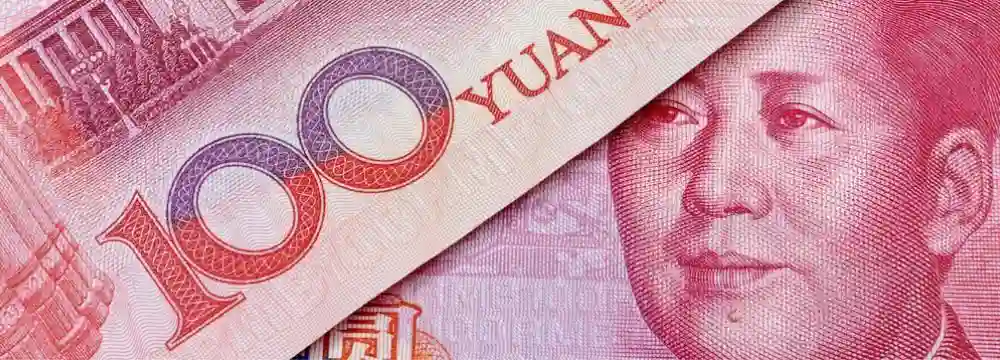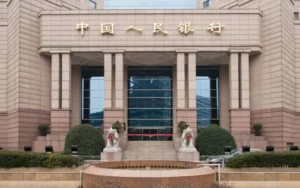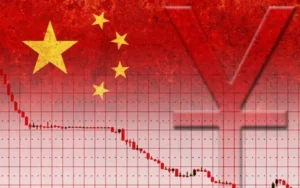Over the last decade, there has been a lot of discussion about the Chinese monetary policy, especially the Chinese currency – the Yuan – officially known as the Chinese Renminbi (“the people’s currency”). A few precursor currencies in China also used the term Yuan as early as 1889, which were often connected to different colonial powers.
However, the form it takes today is unlike the oldest “Yuans” naturally issued by the Chinese government, which originally began bringing their own money into circulation with the communist rise in 1948. However, in 1955, the Yuan was already reissued, since the civil war before this time had led to huge inflation. The government took action by replacing the Yuan with a newly issued series at a rate of 10,000:1.
There has been a significant amount of speculation regarding the currency; as with the increasing relevance of China for the world’s economy, Western experts have often commented on the Chinese currency being undervalued to promote exports and hence its trade surplus.
However, when you look at the overall China exchange rate development, the Yuan has steadily appreciated over the last decade. To what extent was this development in China’s monetary policy systematically directed by the Chinese government and China’s central bank, the “People’s Bank of China” (PBOC), and what are the consequences?
China’s central bank: The People’s Bank of China (PBC) in Beijing.
China Monetary Policy
When considering the purpose of Chinese fiscal and monetary policy, you should understand the objectives set out by the Peoples Bank of China: To maintain the stability of the value of the Chinese currency and thereby promote economic growth. The political component is evident and the economic targets can be reached through a variety of means, but generally consist of 4 key areas being addressed by the PBOC.
- Reducing China bank base (interest) rates encourages firms and individuals to invest and purchase goods due to the cost of borrowing being lower
- Providing increased liquidity within the banking sector to allow commercial banks to issue more loans
- Decreasing risk-free bank interest rates to lower the discount rates investors use, thereby increasing the capital gains investors generate from stock dividends and other investment cash flows
- Depreciate the currency to create higher priced imports and lower priced exports, which can help in certain economic conditions
In the past, the mentioned measures in China monetary policy were used quite independently from each other because of its strict control over the financial sector. Rather the quantity of the money was adapted to the continuously increasing GDP while China’s interest rates (the price for the money) remained pre-determined and was not influenced by supply and demand.
This strategy resulted in artificially low costs of capital for state owned enterprises (SOEs) which generated zombie firm known for high inefficiency and overcapacity. Furthermore, it was only possible to exchange the Chinese Renminbi at pre-determined rates at centralized institutions until the pegging to the USD started in the 1990s.
Due to both negative effects (capital outflow and unstable financial markets) and international pressure (WTO dumping violations), China has continuously liberalized its deposit, lending and exchange rates. Furthermore, transitioning from an export to a consumption driven economy is impossible when imports remain artificially expensive.
New problems arise with this China monetary policy regime namely, what economists call, the policy trilemma: only 2 out of 3 China monetary policy variables (fixed exchange rate, monetary policy independence and open capital account) can be met at one time. China currently chooses to control its capital account, thus prohibiting citizens from moving uninhibited amounts of money abroad.
However, if they removed restrictions imposed on capital movement, the PBOC would have to maintain the China exchange rate by buying RMB through selling USD, because Chinese citizens would sell RMB and buy USD when the interest rates are higher overseas.
With freely floating this relationship, China wouldn’t have monetary policy independence. Given that China wants to have monetary policy independence and a free and open capital account, it would still have a quasi-fixed exchange rate for equaling out their balance.
A compromise between fixed exchange rate and a free and open capital account seems to be likely for the future. You can see this development since the Chinese Renminbi is officially not directly pegged against the USD anymore, but “referenced to” a basket of currencies within a certain range since early 2016.
The appreciation of the Yuan means that you get less for a given amount of Dollars or Euros
– a downward sloping curve.
The Importance of the Chinese Renminbi
The importance of the Chinese Renminbi can be seen when you look at the wider picture. If the Chinese Renminbi was a free floating currency without fixing the exchange rate, then depreciation would be expected to occur due to the slowdown in growth the nation is currently seeing. However, since China is still – or is forced to – artificially pegging the currency against the dollar to some extent, the true value is hard to determine.
The Yuan is increasingly recognized as a world currency. Just recently, the International Monetary Fund (IMF) announced the Yuan was freely usable and will join other established currencies, like the USD and Euro, in the IMF’s “Special Drawing Rights basket”. This underlines the importance of the Yuan and also the changing perception of other countries’ attitudes towards it.






